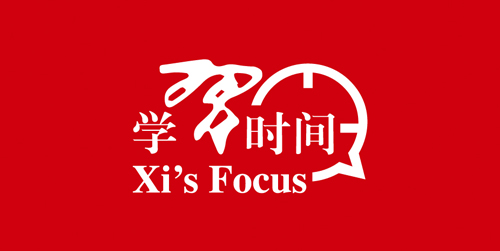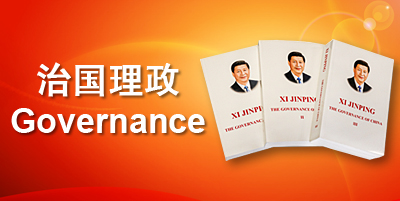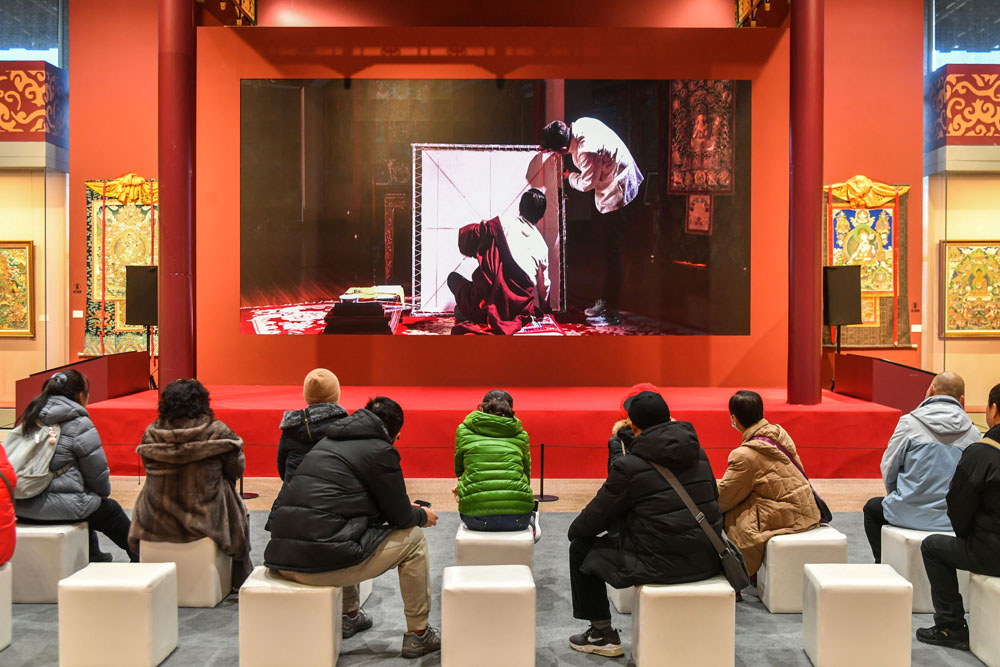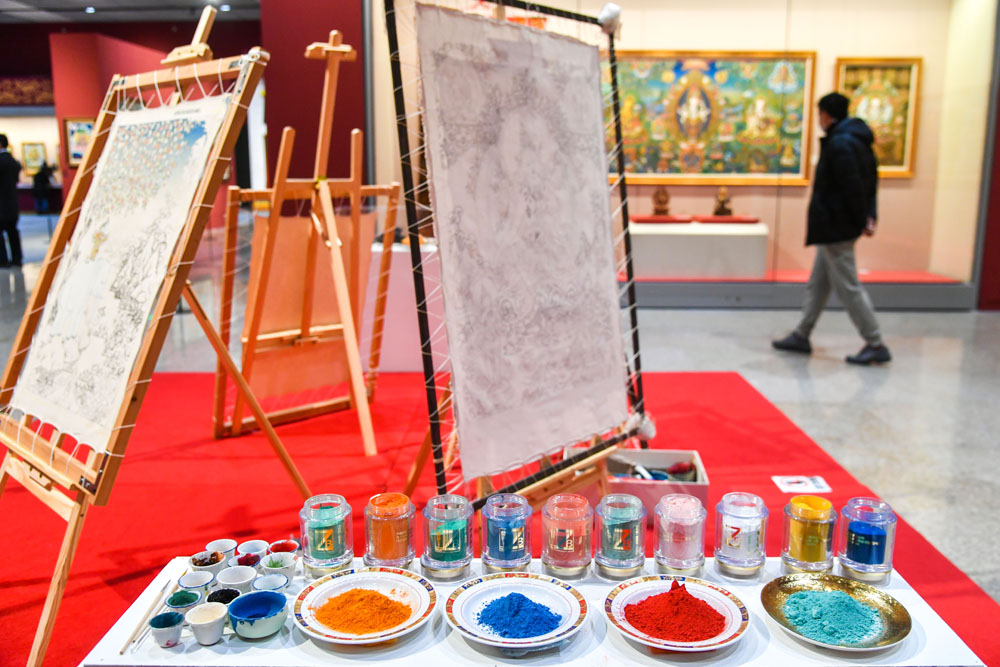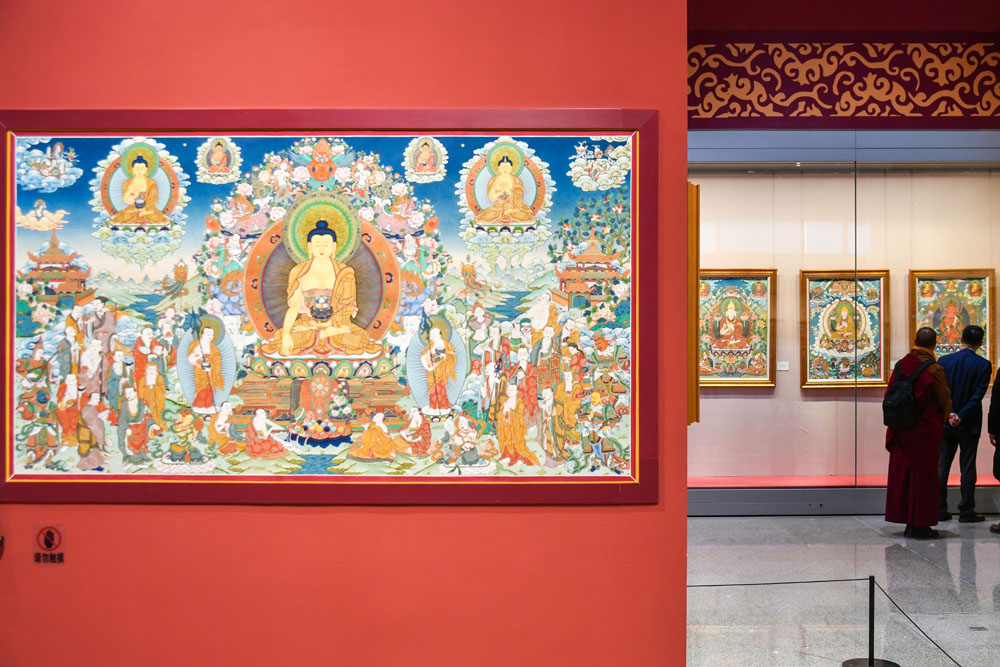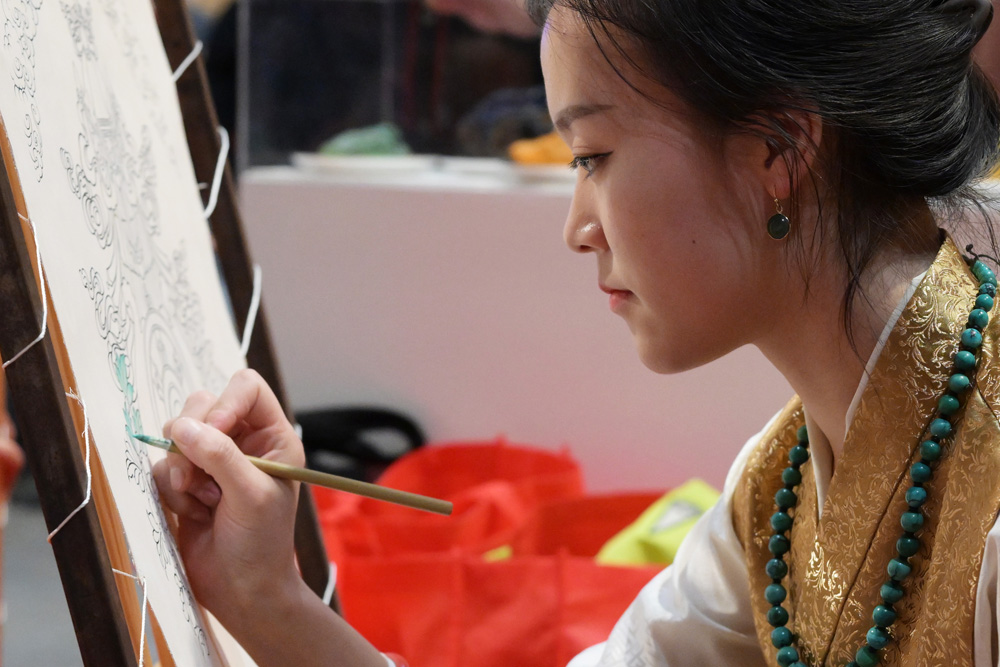An exhibition on Tibetan arts conservation opened at Beijing's Chinese Traditional Culture Museum on December 27, 2023.
It showcases 70 works created by three generations of contemporary Regong arts masters. The term Regong literally means "a golden valley where dreams are fulfilled" in the Tibetan language.
Regong arts are listed on UNESCO's Representative List of the Intangible Cultural Heritage of Humanity. They originated in Huangnan Tibetan Autonomous Prefecture, Qinghai Province in northwest China, in the 13th century. Main art forms include Thangka and mural paintings, patchwork crafts and sculpting.
Thangka paintings are meticulously crafted Tibetan Buddhist scroll paintings on cotton or silk and use mineral and organic pigments, derived from coral, sapphire, pearl, gold and other sources, to ensure their colors will not fade with the passing of time. The art dates back to the 10th century and typically depicts Buddhist deities.

